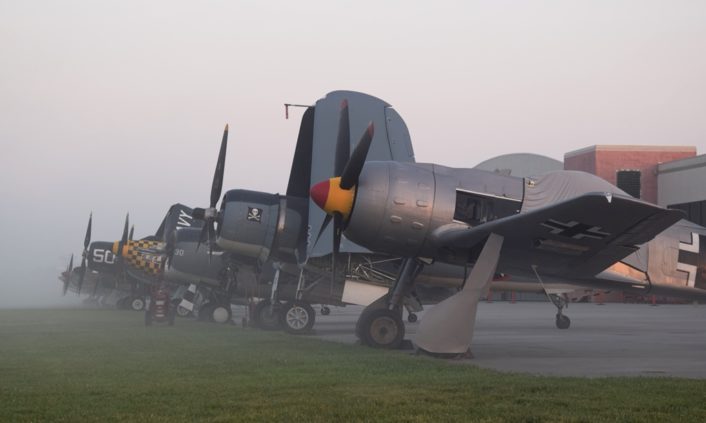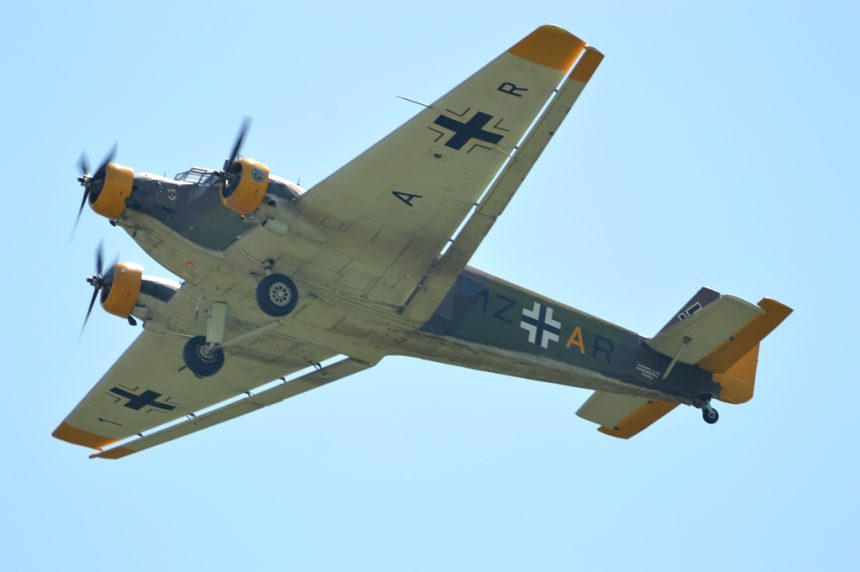The 11th “Warbirds Over the Beach” air show not only featured a wonderful assemblage of aircraft from the Second World War, it had some truly rare planes, in the form of a JU-52, FW-190 and an ME-109.
What do you do if you have been very successful in the aviation education arena? Well if you are Jerry Yagen, you start by collecting warbirds, build your own grass airstrip, restoration facilities, museum and then hold the occasional air show. The Military Aviation Museum’s collection, located near Virginia Beach, Virginia, boasts more than 58 restored and replica aircraft from both world wars. This does not include various aircraft under restoration.
While few museums in the world can boast of having these many planes, it is remarkable to note that most of the aircraft are in flying condition. Instead of observing these machines sitting lifeless behind ropes, people can walk right up to these warbirds before the show and then enjoy them in flight as they were meant to be.
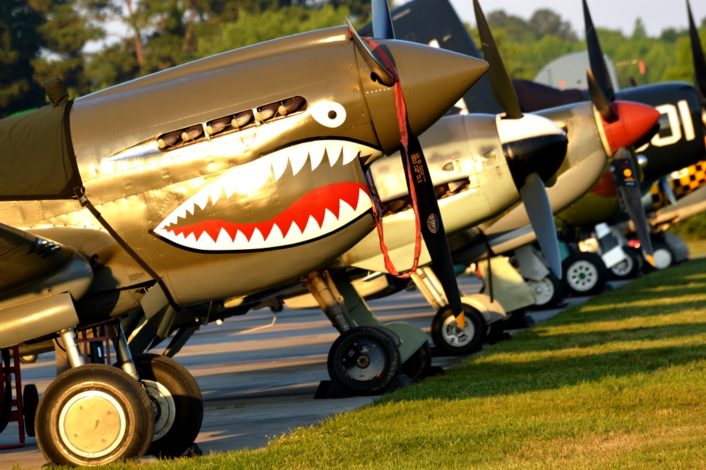
The museum has an impressive number of operational German aircraft and mockups. For myself, it was a special thrill to see a JU-52/3M, FW-190 A-8, and Daimler-Benz powered ME-190 G-4. These planes were either built in Spain and modified or were recently constructed. This may offend aviation purists, but the reality of operating warbirds from the side who lost the war requires some flexibility.
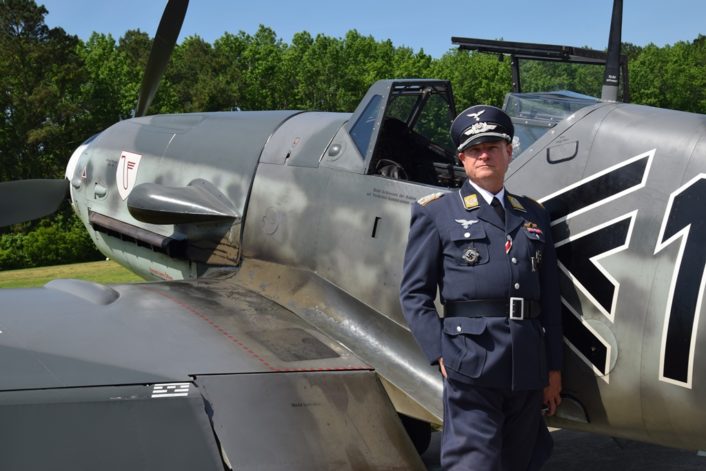
Having never seen a JU-52 in flight, it was great to see this example preforming for the crowd at the show, May 17-19, 2019. As the only flyable JU-52 operating in North America, this is a very rare bird to be seen on the air show circuit. While it is estimated that 4,845 JU-52s were built, only five are currently certified to fly.
This example of “Iron Annie” is a CASA 352L built in Getafe, Spain by Construcciones Aeronáuticas SA in 1949. The Spanish Air Force operated the plane until it was surplused in 1976 and bought by the Confederate Air Force, now known as the Commemorative Air Force. With just about 1,500 flight hours at the time of purchase, this warbird was still considered young in age even after 27 years.
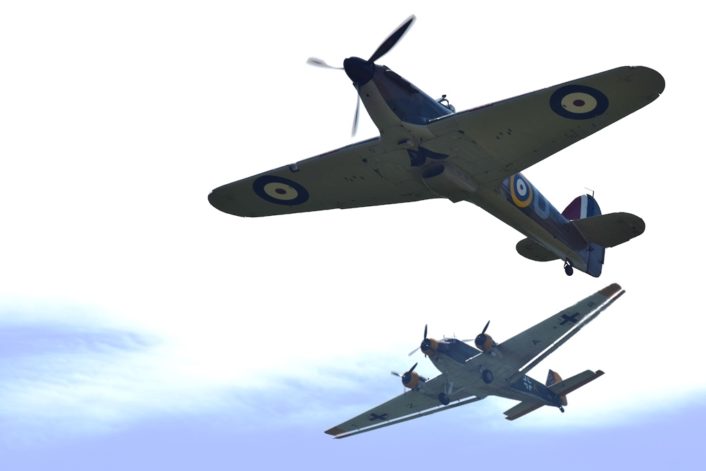
The Commemorative Air Force flew her for a few years, and then ran into a combination of mechanical and funding issues that kept the plane grounded for several years. In the late 1990s, she underwent an extensive restoration which included a new instrument panel, replacement of all wiring, and most importantly three Pratt & Whitney R-1340 engines with three blade constant speed propellers.
One thing about the JU-52 that astonished me, was that the flaps run the entire length of the wing. This of course gives a fairly large aircraft very good STOL performance. The plane’s corrugated duralumin skin may not be that aerodynamic, but it greatly contributes to the strength of its overall structure. Being a tail dragger with fixed landing gear, it shows an early 1930s design and associated technology. Still it was such a sound aircraft, that it was still being produced in France and Spain after the war.
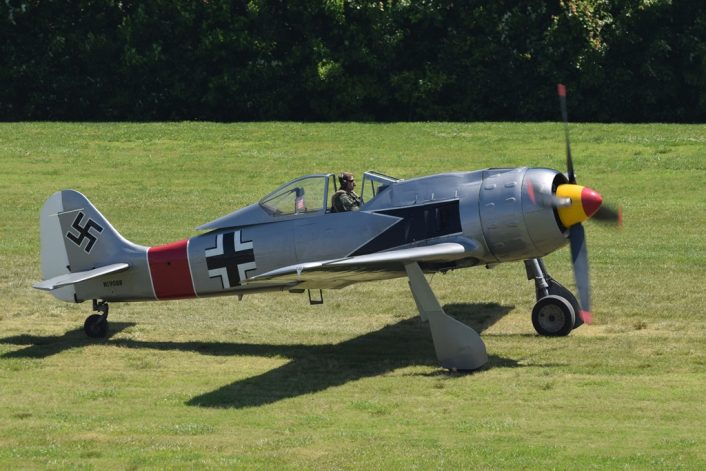
The museum’s FW-190 A-8 “Würger”, aka “Butcher Bird”, is a replica aircraft manufactured by Flug Werk GmbH of Germany. Producing 20 kit replicas in the late 1990s and early 2000s, Flug Werk produced major subassemblies of the FW-190 in both Germany and Romania.
The Military Aviation Museum flew the FW-190 A-8 version for the show. FW-190 A-8 was the most numerous type produced during the war, out of a production run of over 20,000 built. As there were no BMW 801 D-2 engines available to power the replicas, it is highly ironic that they are powered by Russian built Shvetsov ASh-82 radial engines. This drives a four blade propeller, as compared to the original three blade design. The museum also has a FW-190 D-5 “Langnasen Dora” aka Long Nose Dora, though it was not flown due to mechanical issues.
It was fascinating to see this version of the FW-190 take to the skies. With a short takeoff run, it performed a sharp turn to the right as it joined with the German formation. The maneuverability and power of this fighter was a sight to see.
As for myself viewing and hearing the ME-109 G-4 on the ground and in flight was both a very powerful and personal experience. My father was a P-51 pilot and first came face to face with a captured Messerschmitt during familiarization training in 1943. He found it to be a very compact fighter that was rather low to the ground.
The two aspects of this warbird that struck me most was the unique sound of its engine and the plane’s messy appearance from the engine’s exhaust and oil. I found the look a hell a lot more historically accurate as it appeared as an aircraft that was being used for combat. This is sharp contrast to the vast majority of immaculate warbirds on the air show circuit.
This was my very first experience hearing an actual Dailmer-Benz 605 engine fire up and come to life. While this is just my observation, it has much more of a guttural sound; more like a heavy truck engine, as compared to a Merlin. I have seen Spanish built ME-109s powered by Merlin engines, but they just seemed wrong and inaccurate.
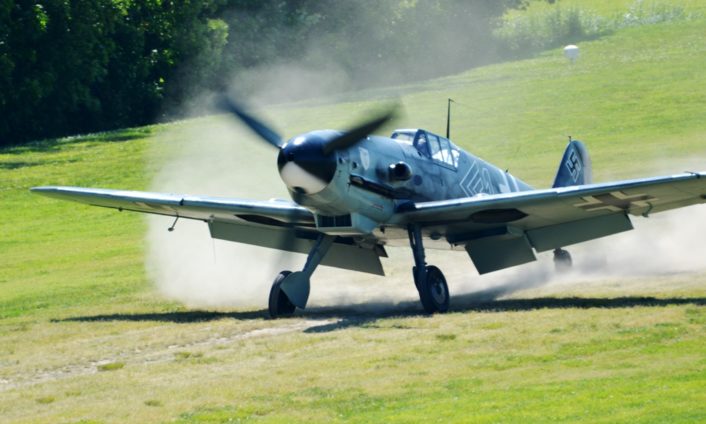
The show’s ME-109 G-4 is sort of a Frankenstein amalgamation of a Spanish HA-1112A “Buchón” fuselage mated to an original set of German Messerschmitt wings and cockpit. The forward fuselage had to be modified to mount an original Dailmer-Benz 605 engine. Airframe work was done by Meier Motors in Germany while the engine was Vintage V-12s of Tehachapi, California USA.
Admiring these German warbirds was a treat. They are extremely rare on the American air show circuit. In addition, I should give mention to the swarm of U.S. Navy, U.S. Army Air Force, and RAF aircraft that also took part in the air show. This is such a wonderful location for an air show and museum with the grass strip and tree line behind it. The audience is relatively close to the action, within FAA safety rules. Plus media was allowed to photograph from the hangar’s roof, providing some wonderful elevation.
If you plan on being on the East Coast of the United States in May, I highly recommend attendance at this extraordinary air show.
